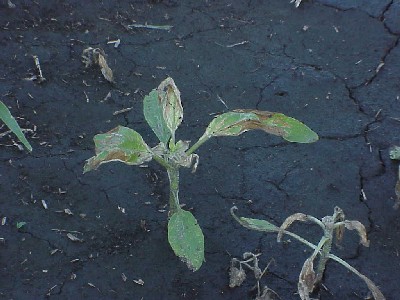Chapter 14: Applied Herbicide Physiology and Movement
14.12 Cuticle Barriers – Weed Growth Stage Effects
The growth stage of a plant influences its susceptibility to postemergence herbicides. Other things being equal, small weeds are more susceptible than large weeds for a number of reasons. The leaf cuticle of small plants is less developed than on older plants, hence herbicide absorption is greater in the younger plants (Figure 15). The surface area to mass ratio is greater in small plants than large plants, so the amount of herbicide absorbed per unit mass is greater in the small plant.

The life cycle (annual, biennial or perennial) of a plant interacts with growth stage (leaf number) in determining susceptibility to herbicides. Annual and biennial plants reproduce by seed only. Killing the top growth of these plants will result in their death. Annual and biennial weeds are most susceptible to foliar applied herbicides prior to bolting or flower stalk elongation.
The smaller the weed at treatment the more susceptible it is to herbicides. Annual, biennial, and perennial weeds are all susceptible to herbicides in the seedling stage. Perennial weeds, after they become well established, reproduce by seed and vegetatively from roots, rhizomes, crowns and other vegetative structures. In order to kill a perennial weed the vegetative reproductive structures must be killed. In most cases the vegetative reproductive structures are located below ground and therefore would not be contacted by a foliar herbicide. Therefore a foliar active herbicide must translocate to these reproductive tissues to kill them. Contact foliar applied herbicides have no effect on underground reproductive structures of perennial weeds. Translocation of foliar applied herbicides to vegetative reproductive tissues is greatest with treatments made to plants in the flower bud stage and in the autumn before a hard freeze.
Review and Reflection